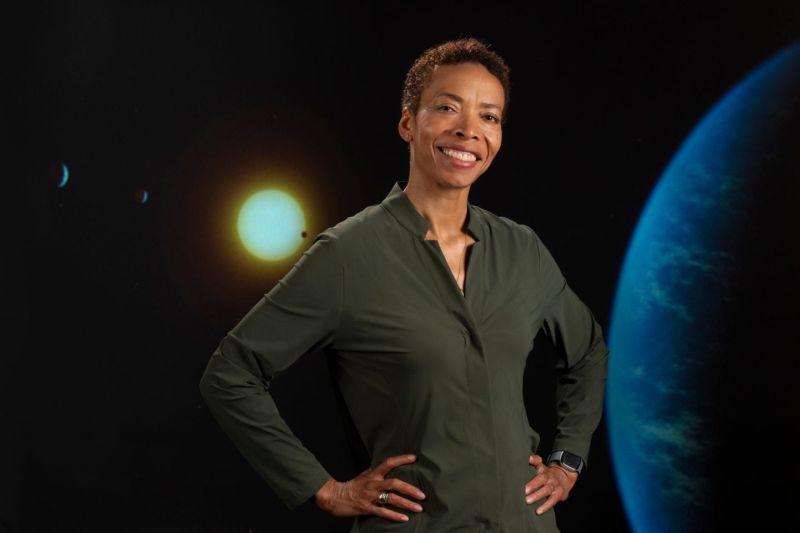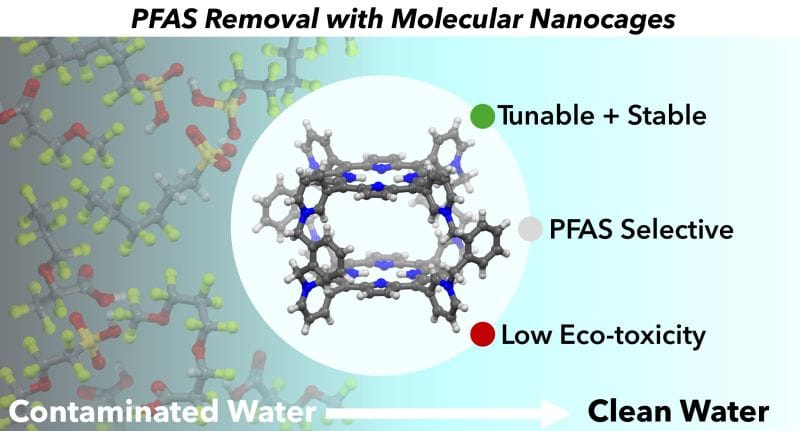RSS feed source: National Science Foundation
A research team led by the recipient of a U.S. National Science Foundation Faculty Early Career Development grant used computer simulations to determine that white dwarf stars have greater potential to host habitable planets than previously realized. The team concluded that many more stars in the Milky Way galaxy might be home to planets that could support life.
There are approximately 10 billion white dwarf stars in the Milky Way. Because such stars are colder than others, scientists have thought they likely would not support habitable exoplanets. Led by Aomawa Shields, a University of California, Irvine professor of physics and astronomy, researchers used a supercomputer provided by the NSF National Center for Atmospheric Research in Boulder, Colorado, to simulate conditions on a theoretical rocky planet orbiting a white dwarf. Using data from real exoplanets orbiting the non-white dwarf star Kepler-62, the researchers found that their simulated rocky planet could have liquid water if it closely orbited a white dwarf and had certain rotational characteristics. Their findings were published in The Astrophysical Journal.
“Not much consideration has been given to these stars’ ability to host habitable exoplanets,” says Shields. “Our computer simulations suggest that if rocky planets exist in their orbits, these planets could have more habitable real estate on their surfaces than previously thought.”
RSS feed source: National Science Foundation
The U.S. National Science Foundation today launched a 24/7 crisis intervention helpline for members of the NSF research community who have experienced sexual assault, sexual harassment, or stalking.
The NSF Safer Science Helpline is an anonymous and secure helpline available to NSF awardees, grantees, scientists, contractors and those affiliated with supporting the mission of NSF, including all those supporting NSF’s mission throughout Antarctica and the Arctic.
“NSF is committed to ensuring a culture free from sexual assault, sexual harassment and stalking,” said Renée V. Ferranti, special assistant to the director for NSF Sexual Assault and Harassment Prevention and Response Program Office (NSF SAHPR). “The NSF Safer Science Helpline will give members of the NSF research community a safe way to access support and resources and help foster an environment free from sexual violence.”
Helpline support specialists provide live, confidential, one-on-one crisis intervention and emotional support, as well as information for reporting channels and helping connect victims of sexual harm to additional support resources.
Victims and survivors can access resources through phone, online chat and SMS text support mechanisms. All services are anonymous and secure, providing NSF community members with the help they need, anytime, anywhere. Services are trauma-informed and survivor-centered, aligning with NSF’s goals of ensuring confidentiality, safety and comprehensive care for victims and survivors.
Individuals can access the NSF Safer Science Helpline in the following ways:
Phone
Click this link to continue reading the article on the source website.
RSS feed source: National Science Foundation
Researchers funded by the U.S. National Science Foundation have created a molecular nanocage that captures the bulk of per- and polyfluoroalkyl substances, or PFAS, found in water — and it works better than traditional filtering techniques that use activated carbon. Made of organic nanoporous material designed to capture only PFAS, this tiny chemical-based filtration system removed 80 to 90% of PFAS from sewage and groundwater during the study, respectively, while showing very low adverse environmental effects.
The study was led by scientists at the University at Buffalo and published in American Chemical Society ES&T Engineering.
PFAS are chemical compounds sometimes called “forever chemicals” and are commonly used in food packaging, nonstick coatings and other applications. PFAS do not degrade easily and are notoriously difficult to remove from water sources. Studies show exposure to PFAS may cause a range of negative health impacts, including decreased fertility, developmental delays in children and increased risk for some cancers. The safe and effective removal of PFAS from groundwater, sewage and other water sources is a national challenge.
Molecular nanocages have been previously suggested as candidates for pollutant removal, including for PFAS. Their sturdy structures provide capabilities to capture, remove and chemically deactivate hazardous substances like PFAS and many others. They could also potentially filter out noxious gases from the air, the study authors say.
<div data-embed-button="media_entity_embed" data-entity-embed-display="entity_reference:media_thumbnail" data-entity-type="media" data-entity-uuid="a2da24fc-8927-49a1-9739-f3e078310484"
Click this link to continue reading the article on the source website.
RSS feed source: National Science Foundation
The U.S. National Science Foundation (NSF) has awarded a $20 million grant to expand the NSF CloudBank, an initiative designed to accelerate science and engineering research through access to commercial cloud computing. Building upon the success of a previous pilot award, this expanded phase will significantly increase access to cutting-edge computing, artificial intelligence model access and other commercial cloud services, strengthening the U.S. science and technology workforce, and ensuring the nation remains at the forefront of global innovation.
Led by the San Diego Supercomputer Center and Information Technology Services Division at UC San Diego, in partnership with UC Berkeley’s College of Computing, Data Science, and Society and the University of Washington’s eScience Institute, CloudBank 2.0 will continue its collaboration with major cloud providers such as Amazon Web Services, Google Cloud, IBM Cloud, Microsoft Azure and NVIDIA’s DGX Cloud. This will provide seamless access to commercial cloud computing, AI tools and model access, and advanced data processing capabilities.
“CloudBank 2.0 will further our mission to expand the ecosystem of available advanced computing, data and AI services available to the U.S. research community — from leading research universities to smaller institutions,” said NSF Director Sethuraman Panchanathan. “By adding commercial cloud resources to NSF’s offerings for researchers, NSF is committing to enhancing partnerships with the private sector. CloudBank 2.0 will leverage industry resources and expertise to strengthen
Click this link to continue reading the article on the source website.



